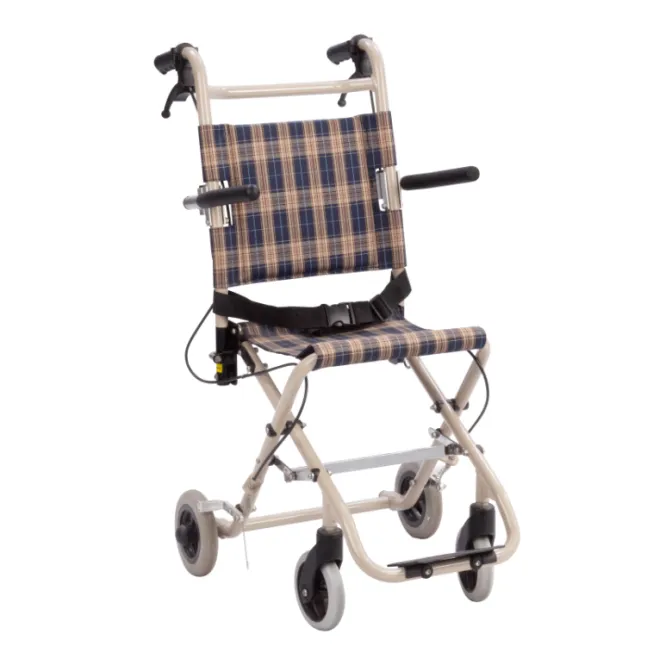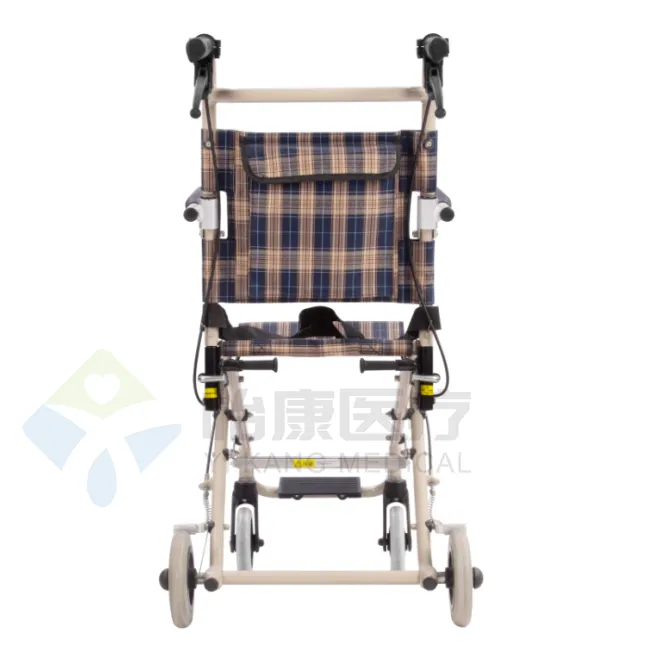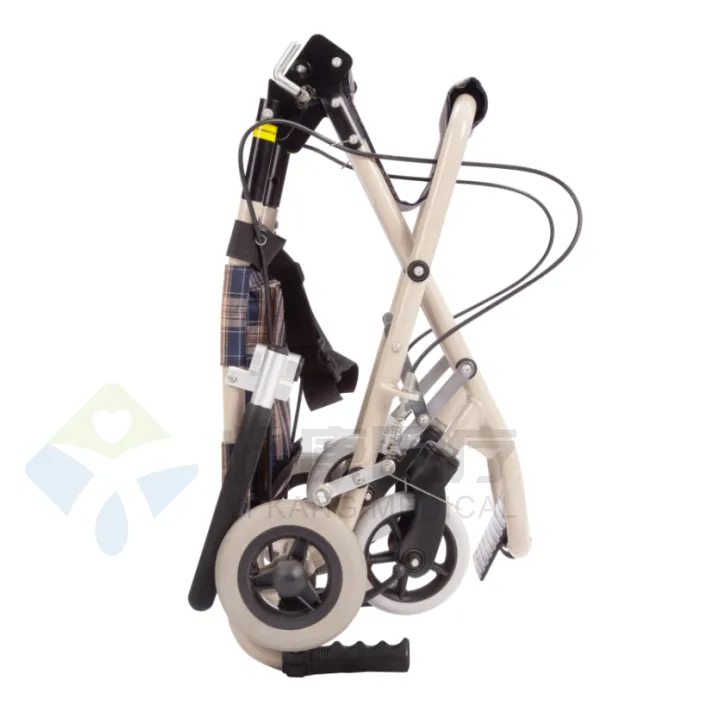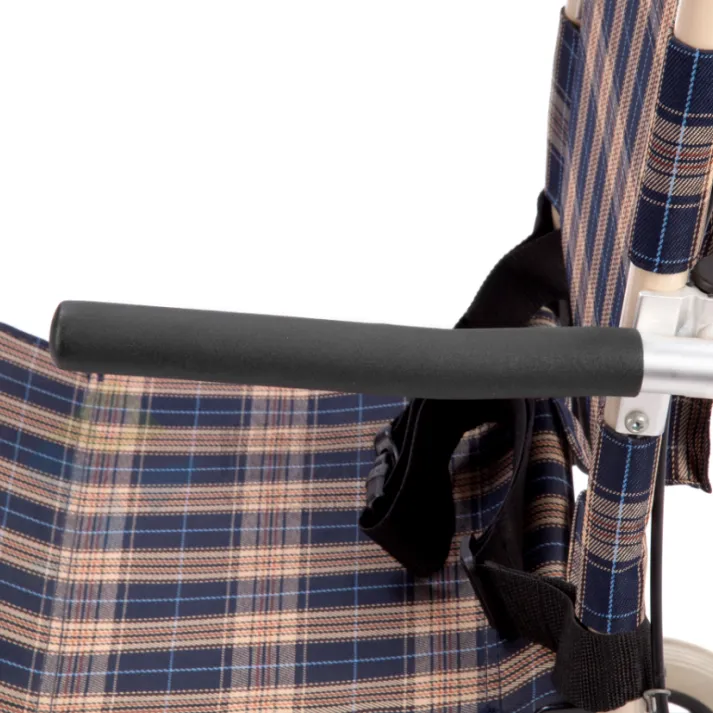In the context of the continuous optimization of contemporary mobility assistance devices, lightweight folding wheelchairs have become an important auxiliary tool widely used in clinical and family settings. Compared with traditional steel or fixed-structure manual wheelchairs, lightweight folding wheelchairs have unique advantages in many usage scenarios due to their light weight, foldability, and ease of carrying and storage.
However, the question of "When should a lightweight folding wheelchair be used?" still needs to be explained professionally and systematically from multiple perspectives, such as medical use, patient functional status, use environment, and nursing operations.
This article will conduct an in-depth analysis of the specific usage scenarios of "lightweight folding wheelchairs", comprehensively analyze their applicable population, structural characteristics, and typical uses, and clarify their actual use opportunities and professional positioning in medical and daily life.

What is a lightweight folding wheelchair?
A lightweight folding wheelchair refers to a manual wheelchair device whose entire vehicle structure is made of lightweight materials (such as aluminum alloy, carbon fiber, or high-strength plastic), has a folding function, and is easy to carry and store. It is mainly used for travel, transfer, or temporary movement of people with limited mobility within a specific time period.
Typical structural features of lightweight folding wheelchairs include:
·Lightweight frame: The weight is usually controlled between 8 and 13 kg, which is convenient for one person to carry;
·Foldable frame: Common X-shaped or T-shaped cross structure, which can be folded and unfolded quickly;
·Portable push handle: There is a handrail at the back, which is convenient for caregivers or accompanying personnel to push;
·Solid tires or air-free tires: Maintenance-free, suitable for short-distance and temporary use;
·Simple brake system: The parking lock function ensures riding safety;
·Some are equipped with seat belts and foot pedals: Increase riding stability and comfort.

Functional positioning of lightweight folding wheelchairs
Among many wheelchair products, the function of lightweight folding wheelchairs is not to replace long-term use wheelchairs, nor is it a full-function substitute, but is designed for specific short-term scenarios, temporary needs or frequent travel. Its core advantages are:
·Convenience: It can be easily stored in the trunk of a car or stored in a corner of the home;
·Flexible movement: Suitable for narrow passages, elevators, public transportation and other environments;
·Nursing assistance friendly: It is easier for caregivers to control and carry.
Therefore, the key to clarifying "when to use a lightweight folding wheelchair" is to understand the status and usage scenarios of its service objects.
When to use a lightweight folding wheelchair?
1. Use for short trips or temporary outings
For some patients who are temporarily unable to move due to chronic diseases, leg discomfort, postoperative rehabilitation, etc., a lightweight folding wheelchair is an ideal tool for temporary travel. Whether going out to see a doctor, attending a family gathering, or going outdoors for fresh air, using a lightweight folding wheelchair can:
· Reduce the pressure of movement;
· Avoid the risk of falling;
· Reduce the physical burden of accompanying personnel;
· Improve travel efficiency.
Its characteristics of being able to be carried in the car and unfolded at any time are particularly practical in non-routine travel.
2. Short-term transfer use in medical institutions
In hospitals, rehabilitation centers, or nursing homes, lightweight folding wheelchairs are often used in the following situations:
· Short-distance transfer between wards and examination departments;
· Temporary mobility restrictions during the postoperative observation period;
· Waiting and examination periods for patients visiting outpatient and emergency departments.
The key reasons for choosing lightweight folding wheelchairs in medical places include:
· Quick deployment and quick storage;
· Easy to disinfect and low maintenance cost;
· Does not take up too much space and is suitable for rotation.
Especially in the emergency area of large hospitals, lightweight folding wheelchairs are indispensable and are an important tool for efficient patient flow.
3. Use in the early stage of rehabilitation or functional transition period
For patients who have just completed surgery or are experiencing the early stage of recovery from a major disease, their motor ability has not yet fully recovered, and long-term walking may lead to fatigue or recurrence risk. The role of lightweight folding wheelchairs at this stage is to:
· Provide short-distance movement support;
· Avoid excessive muscle consumption;
· Progressively restore independent walking function.
On the one hand, it is not as "heavy" as a heavy wheelchair; on the other hand, its lightness can encourage patients to get off the wheelchair and walk when their physical strength permits, thereby avoiding over-reliance.
4. Use for temporary mobility support for the elderly
Due to factors such as osteoporosis, joint degeneration, and chronic diseases, the elderly often have temporary walking difficulties or unstable balance. For this type of elderly people who are not completely disabled or bedridden, lightweight folding wheelchairs have the following advantages:
·Does not affect home space;
·Flexible to use, suitable for temporary needs;
·The elderly can choose to use it when needed to maintain some independence.
Especially in environments with limited family space, narrow corridors, and no elevators, the portability of lightweight folding wheelchairs is far better than that of traditional heavy wheelchairs.
5. Traveling, taking a car or plane, and other transportation scenarios
In crowded places such as tourism, railway stations, and airports, lightweight folding wheelchairs are routine equipment for accompanying family members to carry elderly people or patients with chronic diseases. The main advantages are:
·Quick folding and check-in;
·No need to disassemble a large number of parts;
·Avoid fatigue or falls caused by long-distance walking at scenic spots.
In such scenarios, lightweight folding wheelchairs can not only ensure the comfort and safety of travelers, but also facilitate the rapid passage of security checks, waiting for buses, and boarding.
6. Use during temporary injuries or recovery from lower limb trauma
Patients with lower limb trauma such as fractures, sprains, and ligament injuries are often unable to walk with weight in the early stages of recovery. Compared with crutches or walkers, lightweight folding wheelchairs can provide a more stable sitting posture and support, and are more suitable for the following groups:
·People who cannot maintain an upright posture for a long time;
·Rehabilitators who are afraid of falling or secondary injuries;
·Injured people whose lower limbs need to be completely rested.
In trauma rehabilitation, lightweight folding wheelchairs provide patients with the dual guarantee of freedom of movement and psychological comfort.

Overview of the applicable population of lightweight folding wheelchairs
Combined with the above-mentioned usage opportunities, the main applicable population of lightweight folding wheelchairs can be summarized as follows:
Population type | Typical features | Applicable scenarios |
| Postoperative recovery patients | Temporary mobility impairment but clear consciousness | Transfer to medical institutions, short trips to the family |
| Elderly people | Mild to moderate mobility impairment but not completely dependent | Going out for shopping, visiting relatives |
| Trauma recovery patients | Lower limb limitation, need for stable sitting support | Going out for follow-up visits or family activities |
| Nursing targets | Requires nursing assistance for travel | Easy for nursing staff to promote management |
| People affected by temporary diseases | Fatigue, dizziness, etc., unable to walk for a short time | Temporary support, not long-term use |
Differences between lightweight folding wheelchairs and other wheelchairs
To better understand when to use lightweight folding wheelchairs, it is necessary to compare them with other types of wheelchairs:
| Wheelchair types | Foldable | Weight range | Usage cycle | Applicable scenarios |
| Lightweight folding wheelchairs | Yes | 8–13kg | Temporary/short-term | Outing, hospital, home |
| Heavyweight steel wheelchairs | No/half-foldable | 15–25kg | Long-term/stable | Long-term bedridden, severe disability |
| Electric wheelchairs | No | 25–45kg | Long-term/continuous | Total disability/no upper limb strength |
| Transport wheelchairs | Yes | 7–10kg | Short-term/push use | Hospital, station, airport |
Through the above comparison, it is not difficult to find that lightweight folding wheelchairs play an irreplaceable role in temporary and medium- and short-term use with their "medium support + high convenience".

How Can I Get a Quote from Yikang Medical?
Getting a quote is simple. Just contact us with your product needs, order quantity, and shipping destination. Our sales team will respond quickly with a detailed quotation including product specs, prices, and lead times. Whether you're purchasing for wholesale, resale, or direct use, we offer fair quotes and professional service.

